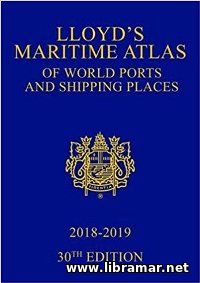 The LMA has been published for nearly seventy years and is the oldest and the most respected atlas among those used in the maritime industry. This Atlas is released to provide users with a comprehensive reference source for locating the ports and shipping places of the world, the information contained in the Atlas includes the main connections together with the canal and river systems considered major.
All commercial ports included in the publication have been covered in a very clear and concise way; the authors of the title have mainly focused on the busiest world trade routes. In addition to that, the book features both regional and world marine distance tables together with the comprehensive user guide, and statistics on the movements of the commercial ships, causalities and characteristics.
The most important and advantageous features of the current release of the Atlas include the top twenty marine ports with the statistics and informative illustrations, completely updated world maps covering the no-go shipping areas due to the ebola, precise longitude/latitude coordinates of more than eight thousand ports/shipping places, newly established indexing systems that allows readers to perform both alphabetical and geographical search and view the main features of each of them covering the LNG imports and exports.
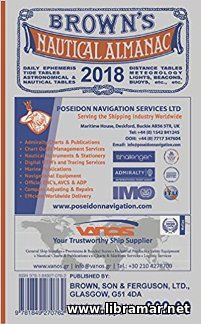 One more world popular and classic nautical publication. The content of this Almanac is traditionally arranged in several parts numbered for easier reference. The first part of the Almanac addresses the astronomical information and data that are commonly used every day by the navigators, together with the clear explanations on their use. The second part of the title is dedicated to the nautical tables and methods used.
The third part contains all required tables of tides for both home and foreign waters; the associated predictions were compiled by the recognized and reliable authorities. Then the part comes dealing with the coastal courses and distances covering the areas around the navigating channels of the British Isles and also near Europe. The fifth part of the Almanac contains the distance tables providing mariners with a worldwide coverage of the total distances between the major ports of US, Canada and Great Britain, and to all principal ports of the world.
The next part is dedicated to the legal issues, while the closing part of the volume deals only with the lights, buoys and beacons of the British Isles. The content of the publication has been carefully proofread and edited, and arrange in a way providing maximum accuracy and ease of reference. Another must-have one for literally every navigator.
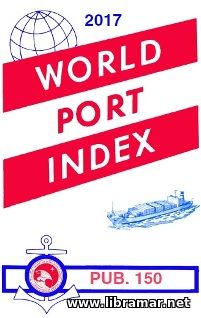 This latest release of the World Port Index, i.e. Publication 150 traditionally provides all interested parties, and mariners in the first turn, with the locations and characteristics as well as the known facilities and available services of the major shipping ports of the world, together with the shipping facilities, oil terminals and other valuable information; the total number if the entries reaches sixty-four thousand.
As always, this release of the Publication cancels the previous one. The selection of the shipping places for the inclusion in the Index is based on the special criteria that have been established by the Agency. Note that they are not random choices. The information about each of the places has been supplemented with the sailing directions and charts, as applicable. The present release of the document includes all information that is currently available to the Agency as of the publishing date.
Taking into account a huge amount of the diversified information and data to be included in the single book, the authors has used some simple codes to indicate certain types of the information contained. All of those code symbols have been explained at the tops of the pages. Needless to say, this publication is there among the top important ones for all mariners regardless of their position.
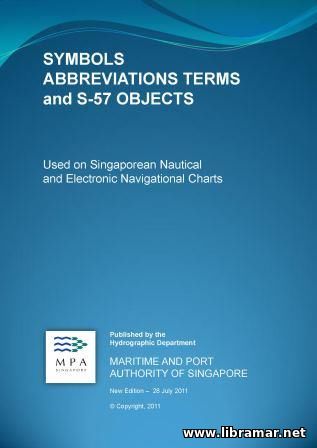 This renewed release of the publication is mainly basing on the chart specifications that are regularly issued by the IHO (standing for the International Hydrographic Organization). It contains the required abbreviations, symbols and terms plus S-57 objects commonly used in national and international navigational charts published by the hydrographic department of Singapore MPA.
The abbreviations and symbols that are shown on the electronic navigational display systems using VEC may actually be seriously differing from the ones that have been described in the present volume. The publication starts with the introduction and information on the schematic layout of the charts. Then, the "General" part comes addressing the numbering of the charts, positions/distances and marginal notes, directions etc. Remaining parts of this title are dealing with the topography, hydrography, and navigation aids/services. In fact, the layout of this volume is similar to the one applied in this Admiralty publication.
There is some supplementary info at the end of the book, for example containing the abbreviations of the principal terminology in English language as well as international abbreviations. Note the chart reference and projection info contained in the opening chapter of the book, as well as the planes of reference, depths, heights, bearings and vertical clearance.
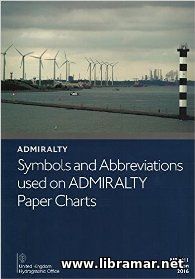 This official publication was initially intended to serve as a primary key to the abbreviations/symbols that are commonly used on Admiralty and also International paper nautical charts that are compiled by the UKHO, standing for the UK Hydrographic Office. Some variations may still occur on the above mentioned nautical charts adopted in the series issued by the Admiralty but originally worked out by other hydrographic offices.
Those abbreviations/symbols that are easily understood have not been included as the examples in this volume. Please also note that the abbreviations/symbols that are shown on the navigational display systems that utilizing the VEC, i.e. vector navigation charts, may sometimes differ from the ones described in this title. The publication starts with the intro part providing some general information including the numbering of charts, title and marginal notes, positions and distances, directions etc.
Then there are three major parts covering the topography, including ports, landmarks and cultural/natural features, hydrography, including depth, currents, tides, seabed nature, routes and tracks, various offshore facilities and installations etc., and navigation aids and services, such as the beacons and lights, fog signals, radars and many other. And, the last part of the book provides the alphabetical indexes.
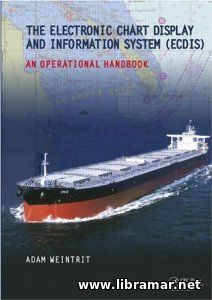 Though the electronic ship navigation is relatively new area, it is becoming more and more common, and this particularly relates to the commercial shipping. The present title by Adam Weintrit was prepared to offer its readers a real wealth of detailed data and information covering the various systems of nautical charting, showing how they operate and answering the most of the frequently asked questions related to the various electronic charts such as the RNC, ENC or DNC and associated systems like ECDIS and ECS.
This is the very first resource providing so much details covering all facets of ECS and ECDIS and it will definitely service as the true Bible for the users of ECDIS. Note that this publication not only provides required technical information to be used for the training programs but shall also be used by the practicing engineers engages in the field maintenance of the ECDIS.
In addition, the volume will present a specific practical interest to the people required to know about the selection and implementation, as well as the operational use and benefits of the above mentioned systems. The management matters have also been covered in this publication. The authors preferred not to go too deep into the purely technical details of actual construction and working principles of ECDIS.
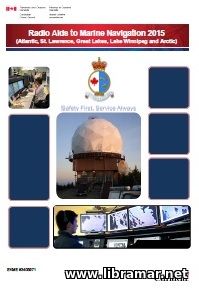 Latest release by Canadian Coast Guard, this one covers Atlantic, Great Lakes, Saint Lawrence, Lake Winnipeg and Arctic). The book starts with the register of latest amendments done to its content. The first part of the book covers such the important aspects as changes to the MMSI numbers, annual publications, ship radio inspections and avoidance of the collisions with right whales - all this information have been included in the introductory part of the document.
The second part of the paper covers the facilities information, including the marcom and traffic services center, racons, i.e. radio beacons and their stations that are continuously in operation, and various canal, port and lock ship operations. The next chapter is solely dedicated to the VTS, standing for the vessel traffic services, and is dealing with the responsibilities of the parties involves, traffic clearance and communications, zone description and application, reports and VTS zone schedules.
The fourth part of the document provides general information covering the procedures, systems and services. Finally, the last fifth chapter of the paper is covering the marine and ice warning and forecast programs by Environment Canada. In short, the content of the document will be helpful to all mariners navigating in Canadian waters.
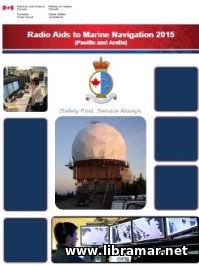 And this is the latest release of another official publication prepared and released by Canadian Coast Guard. The principle layout of the present paper is similar to the one of this document. However, as it is implied by the title of the book, it is covering the Pacific and Arctic regions.
Again, the opening part of the document provides readers with the advance notices including updates to the consolidation of MCTS centers, changes done to MMSI numbers, inspections and MetOC broadcast service plus Prince Ruper MCTS; in addition, there is information on the IRCC, standing for the Joint Rescue Coordination Center, addresses of the regional offices, regional NOTSHIP (i.e. notices to shipping) issuing authorities, directory of telephone/telex numbers etc. The other three parts of the publication are covering nearly same aspects as the document mentioned earlier.
The complete list of tables contained in the volume is provided at the very beginning together with the list of figures. Talking about the last parts of the book dedicated to the Environment Canada's programs, it covers the marine warning, VOS (i.e. voluntary observing ship), marine and ice forecast, and buoys programs, NAVTEX, Pacific Coast and Northern Canada, PMOs and CIS, standing for the port meteorological officers and Canadian Ice Service.
« 1 2 ... 6 7 8 9 10 11 » |







